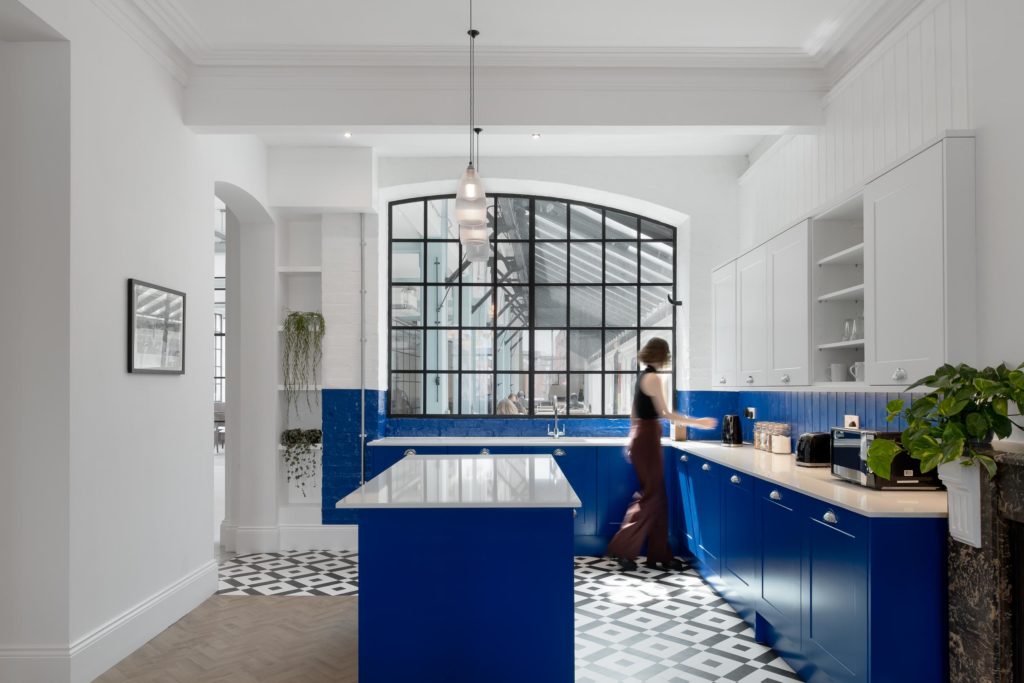The COVID-19 pandemic has undoubtedly reshaped the way we work, forcing companies worldwide to adapt rapidly to remote and hybrid work models. While the pandemic played a pivotal role in accelerating this transformation, we must recognize that the shift towards hybrid working was already underway. The companies that recognized this and designed their offices in advance have been quicker to reap the reward. It is more important than ever to ensure that we design our offices to be the most effective space in this environment. An office that thrives in the hybrid model, promotes collaboration & inspiration, caters for fluctuating numbers and promotes the brand identity for clients & employees.
In this blog post, we’ll explore the reasons why hybrid working would have become a necessity, even without the pandemic.
-
Technological Advancements
Even before the pandemic, technology was advancing at a rapid pace. Cloud computing, high-speed internet, and collaborative software were already in place, making remote work more accessible and efficient. The continued development of these technologies would have made hybrid working a logical progression in the world of work.
-
Changing Workforce Expectations
The workforce was evolving even before the pandemic hit. Millennials and Generation Z, who make up a significant portion of the workforce, were already valuing flexibility, work-life balance, and the ability to work from anywhere. Designing offices to attract and retain top talent was already being considered and rethinking the traditional office-centric models. Now employees want an office design that is worth the journey and promotes well-being.

-
Globalization and Diverse Talent Pools
As businesses expanded their reach and sought to tap into global talent pools, remote work and hybrid arrangements became essential. To collaborate with teams and individuals worldwide, organizations needed to facilitate work across different time zones and locations. Hybrid work was a natural solution to these challenges.
-
Environmental and Commuting Concerns
Increasing awareness of environmental issues, coupled with the growing frustrations of daily commutes, pushed for alternative work arrangements. Hybrid work could help reduce carbon footprints and alleviate the stress associated with long hours spent traveling to the office. When they reach the office, the environment must be comfortable and inviting. If its notably worse than home…..what is the point?

-
Business Continuity and Disaster Recovery
Organizations were increasingly recognizing the importance of having flexible work arrangements as part of their business continuity plans. Events like natural disasters, political unrest, or health crises could disrupt traditional office setups. Having remote and hybrid work capabilities ensured that businesses could continue their operations, regardless of external challenges. It also allows companies to expand and retract with the market ensuring they are more sustainable. This has attracted people to offices that have been designed with a mixture of permanent offices and co-working spaces.

-
Cost Savings
Companies had started to realize the potential cost savings associated with reducing the need for extensive office spaces and overhead. Transitioning to a hybrid work model could help organizations allocate resources more efficiently and invest in other areas of growth and innovation. The savvy companies are holding on to smaller office space but ensuring they are designed to be the most effective space. One that thrives in the hybrid model, promotes collaboration to drive productivity when those are in the office and is efficient in space to cater for fluctuating numbers and promotes the brand for clients & employees.

So…….Hybrid office design has been an inevitable evolution
While the COVID-19 pandemic may have acted as a catalyst, the move toward hybrid working was already in motion due to technological advancements, changing workforce expectations, globalization, environmental concerns, and business continuity considerations. The pandemic merely underscored the urgency of adapting to this new work paradigm.
As we move forward, it’s evident that hybrid working is here to stay. Businesses that have embraced this model and designed their offices for hybrid working are likely to continue reaping the benefits it offers, both in terms of employee satisfaction and operational efficiency. The pandemic may have accelerated the shift, but it was destined to happen sooner or later, with or without a global crisis.
If you would like to talk about how you can design your office to create a perfect space for hybrid working and increase employee productivity & wellbeing……feel free to get in touch and we will happily talk through amazing ideas catered for you.




